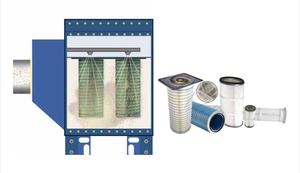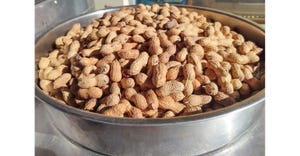May 24, 2018
Over the years, the approaches to food plant design have changed drastically. The needs of food plants have evolved, with new concerns about healthy food, energy efficiency, the sanitation of plants, and so much more being at the forefront of everyone's minds. As a result, industrial plant managers and owners need to take a step back and assess the state of their plants to ensure they meet these new higher standards. Here are some of the top concepts in food plant design to consider when it comes time to renovate your food plant.
1. Aim for Energy Efficiency
Of all the design trends on this list, energy efficiency is one of the top ones. With growing concerns about the environment and everything that gets released into it, energy efficiency has become a significant factor in commercial plant design. While it is a concern that affects all industries, food plants are especially put-to-task as, in some ways, a plant's energy efficiency can affect the safety and quality of the food products coming from the plant. Consumers are pushing for plant managers and owners to take steps towards more energy-efficient operations.
There are many ways one can improve the energy efficiency of a food plant. One thing that is to ensure that the plant is well-insulated, which will keep heat and cold from escaping, which would force the systems to work harder. Switching to LED lighting is another way to reduce energy costs significantly, as LED lights require less energy and last longer than halogen bulbs. Another way to create a more energy efficient plant is to find a new approach to water conservation; something consumers are becoming more and more concerned about these days. By finding ways to conserve the water used in the plant, whether it is installing advanced flow meters or a new trench drain systems, water conservation should be at the top of your list.
2. Continued Mergers and Acquisitions
Not all mergers and acquisitions happen in the technology field. Food industries are also seeing their fair share of action. Most predominantly, there has been the Amazon-Whole Foods mergers at the tail-end of 2017 that saw Amazon buy the popular grocery chain. But, not all mergers and acquisitions need to be so big or expensive. Consumers want to see more from smaller businesses, and the best way to get that is for larger companies to acquire smaller food plants. Merges like these help to set smaller companies up for more success, while giving them an introduction to a bigger into the marketplace.
3. Planning for Natural Disasters
There is no denying that 2017 brought to light a fear that many plant managers did not always give much thought before: the effects of natural disasters. From wildfires to devastating hurricanes, countless businesses saw unheard of levels of destruction. As a result, plant managers have begun considering ways to protect their plants from any potential future disasters. As a manager, it is critical to consider the location of suppliers and the plant itself, as certain places may be more prone to severe weather issues than others. Additionally, food plant managers need to create an emergency preparedness plans to ensure that, should something occur, the plant is prepared, and everyone knows what needs to do so that production is not left at a stand-still.
4. More Healthy and Natural Foods
Just as consumers are becoming more conscious about the way food plants affect the environment, they also pay more attention to what they put into their bodies. These days, everyone is trying to eat healthier and avoid specific ingredients they feel are unhealthy. But, food sensitivities to some ingredients such as gluten and peanuts are also becoming more prevalent. In most cases, the changes required to make a food plant geared towards healthier foods are not difficult. But, in other cases, food plant managers may have to consider new types of equipment, especially when dealing with allergy sensitivities, since specific ingredients may be required to be kept separate.
5. Greater Emphasis on Sanitation and Drainage Design
One last food plant design trend that food plant managers and owners need to keep in mind is the level of sanitation. Sanitation is, without a doubt, one of the most important factors of a food plant, and the easiest way to ensure proper sanitation is to have the right drainage system. While there are many different types of drainage systems on the market, some stand out above the rest. Trench drain systems are becoming more and more popular. These drainage systems are more efficient in their drainage, allowing for a more sanitary food plant, at a lower cost to install and maintain. Another benefit to trench drain systems is a grateless drain system, making them easier for plant managers to maintain.
Summary
Owning and operating a food plant is no easy feat, and with constant-growing competition, it is essential that plant managers do everything they can to stay at the top of the game. These are just a few of the food plant design trends that managers and owners alike need to be aware of and consider implementing in their plants. While it can take time to make all of these changes, they can make a massive difference and help the plant find more success over time. But, if there is one place that is good to start, it may be with updating the trench drain systems. That alone can have a significant impact.
Matt Lee is editor, Innovative Building Materials, Austin, TX. For more information, call 512-508-4667, visit www.innovativebuildingmaterials.com, or http://blog.slotdrainsystems.com/trench-drains
For related articles, news, and equipment reviews, visit our Equipment Zones
You May Also Like


